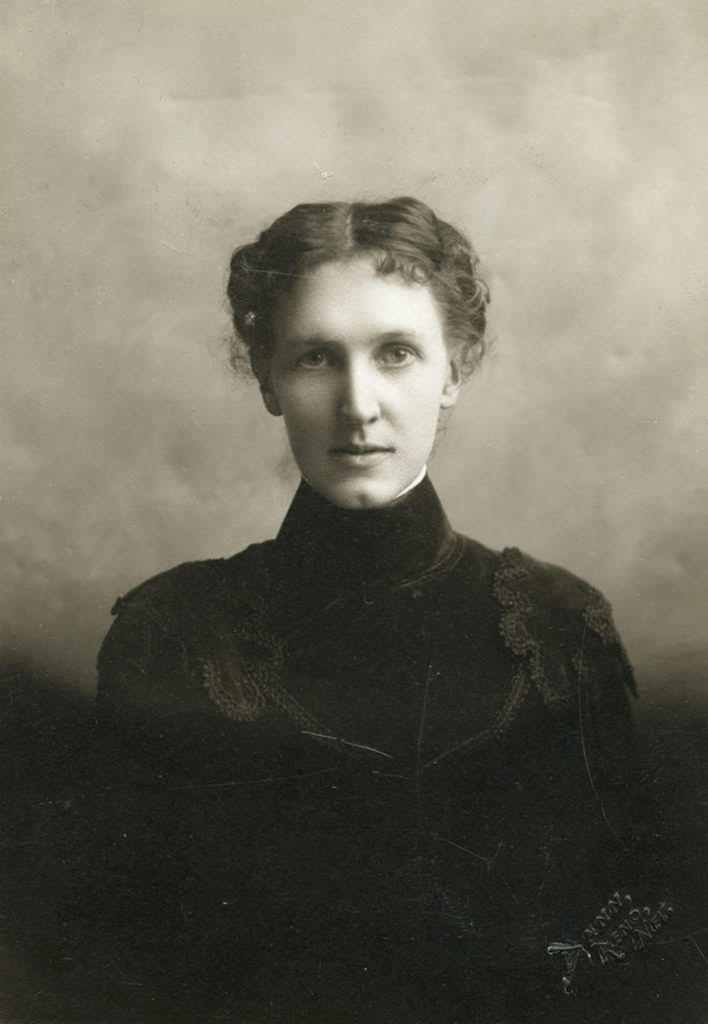Jeanne Elizabeth Wier

By Su Kim Chung, Ph.D. Head of Special Collections Public Services, University Libraries
University of Nevada, Las Vegas, Professor, Department of History, University of Nevada, 1899-1940, Secretary, Nevada Historical Society, 1905-1950,
Jeanne Elizabeth Wier was born in Grinnell, Iowa on April 8, 1870, as the second daughter of teachers Adolphus William Wier and Elizabeth Greenside Rood Wier. An excellent student, she graduated high school as class valedictorian at age sixteen, before continuing her education at the Iowa State Normal School where she received a Bachelor of Didactics in June 1893. Wier followed her family west after graduation and after a short stint as a teacher and principal in Heppner, Oregon, enrolled in the newly-created Stanford University at the beginning of the 1895-96 academic year. Majoring in history, Wier also worked part-time as a teacher throughout her time at Stanford. In 1899, she took what was meant to be a temporary post as a history professor at the University of Nevada to stand in for her former classmate Anne Martin while the latter was on leave. Wier would remain there until she retired in 1940, serving as both professor and chair of the department. She was probably best known, however, for her pioneering work preserving the history of Nevada through her position as Secretary of the Nevada Historical Society for over forty-six years.
Although highly supportive of suffrage efforts, Wier’s double workload meant that her contributions were not as significant as some of her Nevada contemporaries such as former classmate Anne Martin who is generally credited as the person most responsible for the successful passage of suffrage in Nevada. Wier’s most recognized effort was organizing the first meeting of the Nevada branch of the Equal Franchise Society which took place on January 28, 1911 at the Odd Fellow’s Hall in Reno, Nevada, and at which she gave a passionate speech in support of suffrage concluding “The time has now come in this twentieth century when the problem must be met. No longer can the forces of progress be dammed up behind this political barrier.” Prior to the meeting, in a January 26 letter to Katherine Duer Mackay, prominent New York suffragist and supporter of women’s rights, and wife of financier Clarence Mackay, Wier noted “Of course we shall have the saloon and the gambling element against us, but I believe that we stand a good chance to win, even at this [Assembly] Session.”
Although elected to the Board of Directors of the Nevada Branch of the Equal Franchise society in February 1911, she was not one of the members who spoke in front of the assembly that year, likely because she was already involved in crucial work for the Society. She wrote some letters on suffrage issues to Mackay and other professional women in Nevada after this initial meeting, but her involvement was limited thereafter because of her university duties, and the work she was doing on behalf of the Nevada Historical Society. In a letter to Anna Shaw, President of the National American Woman Suffrage Association, the following month, she remarked that the group was circulating petitions and pushing the work while at the same time noting : “I am doing what I can for the suffrage movement but am also trying to impress other people into the work who have not so many irons in the fire.” Wier’s own papers and the records of the Nevada Historical Society show that she had little involvement with the suffrage movement in Nevada beyond this original meeting. She no doubt followed it closely in the newspapers, however, and because of her relationships with some of the women involved, was keenly aware of its progress, and celebrated its eventual passage in 1914.
It was well-known that Wier and Anne Martin had a contentious relationship, but years later, in a letter to the editor of a volume on the history of the suffrage movement in the United States, Wier acknowledged the contributions of the latter with regard to Nevada: “As for Miss Martin, there is not the slightest doubt that without her help the amendment would never have been carried. There was no other one person in the state who combined the ability and the leisure to systematize and carry through a movement of that size. The fact that she seems to have merited much of the criticism that has been made of her does not in the least justify anyone in denying her the credit which she earned.”
Sources:
- Chung, Su Kim. “‘We Seek to Be Patient’: Jeanne Wier and the Nevada Historical Society, 1904-1950.” PhD diss, University of California, Los Angeles, 2015.
- “Equal Rights Arguments Are Made by Forceful Speakers,” Nevada State Journal
- , January 29, 1911.Jeanne Wier to Katherine Mackay, January 26, 1911, box 1, folder 1911-1, Nevada Historical Society Records, MS/NC 280, Nevada Historical Society, Reno, Nevada.
- Jeanne Wier to Anna Shaw, February 14, 1911, box 1, folder 1911-1, Nevada Historical Society Records, MS/NC 280, Nevada Historical Society, Reno, Nevada.
- Jeanne Wier to Ida Harper, February 5, 1921, box 3, folder 1921-1, Nevada Historical Society Records, MS/NC 280, Nevada Historical Society, Reno, Nevada.
